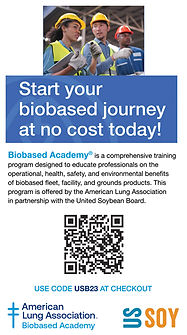GE Aerospace joins consortium to study compatibility of 100% SAF with jet engines

Efforts to reduce carbon emissions in the aviation industry took another step forward with the recent announcement of a unique new coalition that brings together leading aerospace companies.
The International Aerospace Environmental Group has formed a new work group to study the impact of 100 percent sustainable aviation fuel (SAF) on airplane and engine systems and evaluate technical issues.
With a shared conviction that SAF is important to meeting aviation’s 2050 goal of net-zero CO2 emissions, GE Aerospace will join Airbus, Boeing, Dassault Aviation, Safran, and other companies in coordinating 100 percent SAF testing results.
As they proceed, the work group will share findings with ASTM International, a standards-setting organization, in a larger effort to develop new specifications for the use of 100 percent SAF.
Work Group 13, as it’s called, will also engage with infrastructure stakeholders—fuel producers, airports and airlines—to reveal future steps toward a wholesale transition to the alternative fuel.
A global goal like this requires a groundbreaking level of collaboration.
Ryan Faucett, an IAEG board member and vice president of environmental sustainability at Boeing, said that in an effort “to prepare the broader aviation ecosystem for 100 percent SAF capabilities,” Boeing will share findings from its own SAF-compatibility and jet-fluids research with Work Group 13.
IAEG Chair Bruno Costes promised a similar approach from Airbus, where he serves as senior director of institutional relations and standardization.
“Airbus will bring its knowledge and experience from years of 100 percent SAF demonstration flights, coupled with our technical expertise in developing new fuel standards,” he said.
In GE Aerospace, Work Group 13 has an especially powerful ally.
Just last year, the company completed testing on its 10th airplane-engine model since 2016 using 100 percent SAF in one of the industry’s most expansive programs for exploring the alternative fuel.
So far, tests using 100 percent SAF at the component-, engine-, or aircraft-level have included F414, GE90, GE9X, LEAP-1A and -1B, Passport, GEnx, CFM56, GP7200, and HF120 engines, and have been performed in collaboration with FedEx Express, United Airlines, Emirates, NASA and an array of other partners.
These tests have explored a mix of propulsion systems used for domestic and international commercial air travel, military aviation and business and general aviation, and have evaluated a wide scope of other factors, such as engine performance and the impact of 100 percent SAF on contrails.
“It’s not a research project that we are doing on the side,” said Gurhan Andac, the company’s engineering leader for aviation fuels and additives, who has led GE Aerospace’s SAF efforts for more than 15 years.
He said the IAEG consortium has arrived not a moment too soon.
In late 2021, President Joe Biden announced a Sustainable Aviation Fuel Grand Challenge, which called for the production of “at least 3 billion gallons of SAF per year by 2030 and, by 2050, sufficient SAF to meet 100 percent of aviation fuel demand, which is currently projected to be around 35 billion gallons per year.”
Meeting a goal like this, Andac said, will require an extraordinary range of partners—from researchers to equipment manufacturers to the producers of feedstock and fuel—and the kind of momentum Work Group 13 could well provide.
SAF is the equivalent of Jet A and Jet A-1 fuel—the same kerosene end-product that has been burned in jet engines for decades.
The difference is that SAF is synthetically derived from alternative renewable sources and developed in a more sustainable fashion, as opposed to conventional petroleum-based fuels.
SAF can start from various feedstock sources, such as oils from plants, algae, greases, fats, waste streams, alcohols, sugars, and even captured CO2, reducing emissions over the fuel’s lifecycle.
Emissions during flight when the fuel is burned is the same as conventional jet fuel.
The aviation industry is on track to serve 4.7 billion passengers this year, according to the International Air Transport Association.
With U.S. jet-fuel consumption alone predicted to increase by about 32 percent by 2050, the need for solutions only becomes more urgent.
While the challenge may sound extravagant, Andac believes it can be reached through a steady unified effort.
“I think in about 10 to 15 years,” he said, “it will really accelerate when we have the fuel technologies in place, the policies in place, and the airframe and engine technology in place regarding SAF use.”






















-RKstandin.jpg)
_gif.gif)




